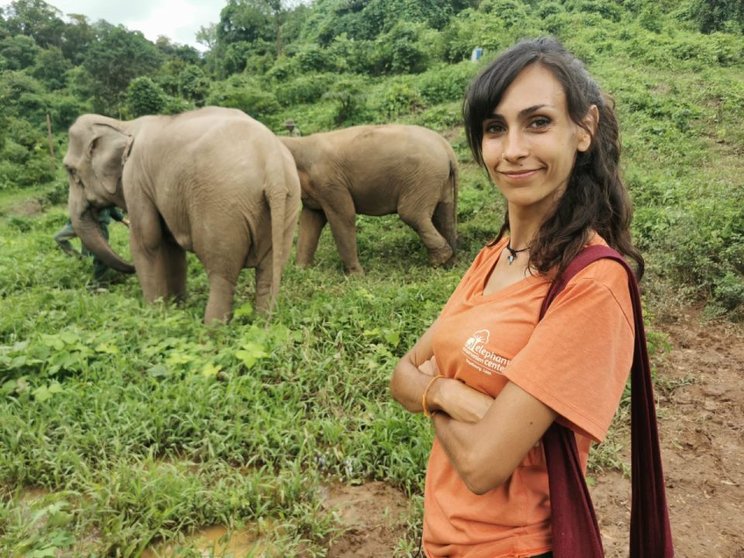
Laos is one of the jewels of Southeast Asia that still preserves the charm of wild nature. Historically known as Lan Xang, the Land of a Million Elephants, Laos is considered by the World Wide Fund for Nature to have the largest population of elephants in Indochina. Unfortunately, today there are only an estimated 400 wild elephants remaining, a massive reduction that has become a global issue.

Among the main threats to the elephant population are habitat loss due to deforestation, habitat fragmentation, resulting in the loss of their migratory routes, human conflicts, and illegal trade.
Despite the population decline in recent decades, there are still signs of hope. In the province of Sayaboury, about two and a half hours from Luang Prabang, the Elephant Conservation Center (ECC) is located, dedicated to the protection and recovery of these magnificent creatures, where educating and raising awareness among tourists and locals is one of their conservation strategies.

Here, we met Anabel López, a biologist from Madrid with an Extremaduran accent, who left everything behind ten years ago to start working with elephants at the ECC. Supervising and protecting this population and their habitat has become her daily routine, as well as the rehabilitation of captive elephants living in the center.
"We have managed to reintroduce several elephants into the wild through our program," said Anabel.
She shared the current issues faced by the elephant population, such as deforestation, human-elephant conflicts, and reproductive problems in elephants that have lived in isolation and/or captivity. "We are researching reproduction and socialization protocols to assist other centers," she told us with hope.
The center boasts one of the few elephant hospitals in Laos and a large area of land that allows for natural reproduction and socialization. "We have successfully reintroduced several elephants into the wild through our program," she said with a smile, an extremely complex achievement.

At the ECC, elephants live in their natural habitat, and interaction with humans is limited. Unlike many elephant sanctuaries where they are used for rides and tourist-centered activities, here, it is the tourists who adapt to the elephants' schedules and routines. Far from riding on their backs or subjecting them to hours of work and the resulting stress, visitors observe the animal behavior from a certain distance.

The center's focus on education and ecological awareness aligns with its facilities. To reduce their impact on the environment, the accommodations have been built using mostly local materials and wood. They also provide organic soaps to avoid generating waste that could harm the environment.

Tourism is the main source of income for the center. They also engage in crowdfunding and receive private donations and grants.
These funds are primarily used for conservation and the well-being of the elephants. They also pay fair wages to their workers, 90% of whom are Laotian citizens, and support projects related to the conservation of wild elephants and the protection of their habitat.
The ECC made history in Laos by releasing five elephants into the Nam Pouy National Protected Area on March 18, 2019. This extraordinary and challenging event was made possible, in part, thanks to committed and compassionate tourism that travels with the idea of learning, contributing, and making a difference wherever they go.
















